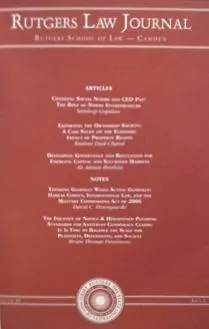- | Academic & Student Programs Academic & Student Programs
- | Regulation Regulation
- | Journal Articles Journal Articles
- |
Homeland Security and Regulatory Analysis:
Are We Safe Yet?
Originally published in Rutgers Law Journal
During the five years since its inception, the Department of Homeland Security (“DHS”) promulgated thirteen economically significant regulations, costing a total of at least four billion dollars

During the five years since its inception, the Department of Homeland Security (“DHS”) promulgated thirteen economically significant regulations, costing a total of at least four billion dollars annually. This study evaluates the quality of regulatory analysis that DHS has produced for these regulations. Compared to the ideal articulated in Executive Order 12,866 and accompanying Office of Management and Budget (“OMB”) guidance, most of these analyses are seriously incomplete. DHS, OMB, and Congress can all take steps to remedy this deficiency. DHS should hire more economists, involve them early in developing alternatives, manage them in a way that ensures their job is to conduct objective analysis, and learn from both its own and other agencies’ best practices in regulatory analysis. OMB should aggressively promote analysis of alternatives when it reviews DHS regulations and amend Executive Order 12,866 to clarify that it expects agencies to analyze all reasonable alternatives, even if they would require a change in the law. Congress should give DHS greater discretion to craft regulations and give DHS deadlines that allow adequate time to conduct quality regulatory analysis. Congress should also hold DHS accountable by specifically articulating and measuring the outcomes the regulations are supposed to accomplish. If Congress declines to give DHS more discretion or time, then it should arrange for an objective analysis of alternatives by the Government Accountability Office or other independent entity.
To speak with a scholar or learn more on this topic, visit our contact page.

